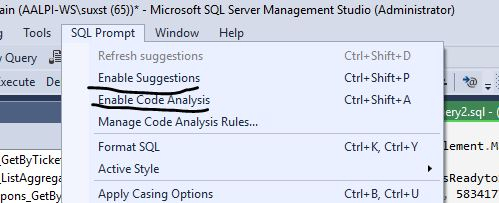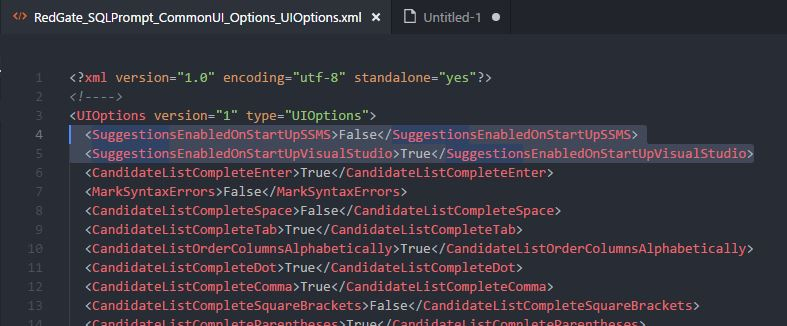Comments
4 comments
-
 Hi @sdks
Hi @sdks
Thanks for your post.
If SQL Prompt has been successfully installed then you'll see it as a top menu item within SSMS. If the drop down menu is a short one then you'll have to activate it using your serial key. This can be done via the 'Manage my license' button. If it has already been activated then you will have a longer list of options to choose from. You should run a query in order for the full list of SQL Prompt options to become available in this drop down menu and you should also ensure that 'Enable suggestions' is ticked.
If you don't have access to your serial key then please contact your product owner at your organisation who can send invites to end users on specific serial keys.
I hope this helps.
Kind regards
Richard Lynch. -
 Hi, @RichardL. I'm asking about the possibility to automatically get this information and depending on the SQL Prompt state to do some actions or not to do.
Hi, @RichardL. I'm asking about the possibility to automatically get this information and depending on the SQL Prompt state to do some actions or not to do. -
 Hi @sdks
Hi @sdks
Thanks for your reply.
I'm sorry but could you please elaborate some more on what you're looking to find out?
I can't quite understand the question.
I look forward to your reply.
Richard Lynch. -
 hi @sdks
hi @sdks
if I've got it correctly, you're looking for a way to check whether SQL Prompt is enabled on suggestions and code analyisis, and then you'd like to disable those two options programmatically:
if so, there is a file calledRedGate_SQLPrompt_CommonUI_Options_UIOptions.xml
located into%LOCALAPPDATA%\Red Gate\SQL Prompt 9
(because I've the version 9).
You can find the two flags on it, as described here:
Changing it and restarting SSMS will maybe work (never tried before to be honest).
Hope this helps
Add comment
Please sign in to leave a comment.
If yes, then is it possible to try to enable it or even provide License key to it?